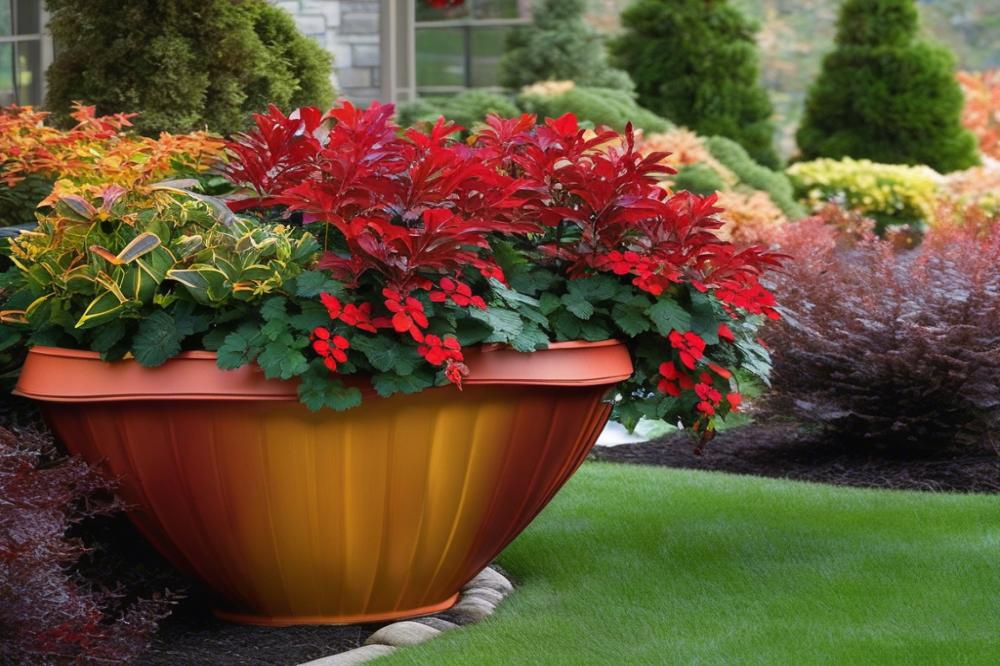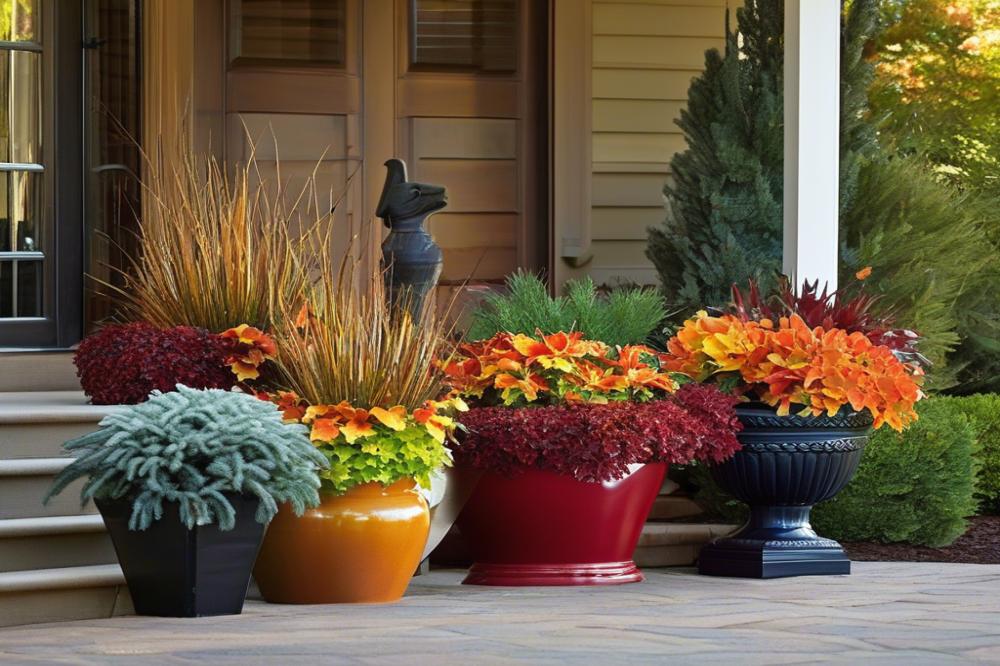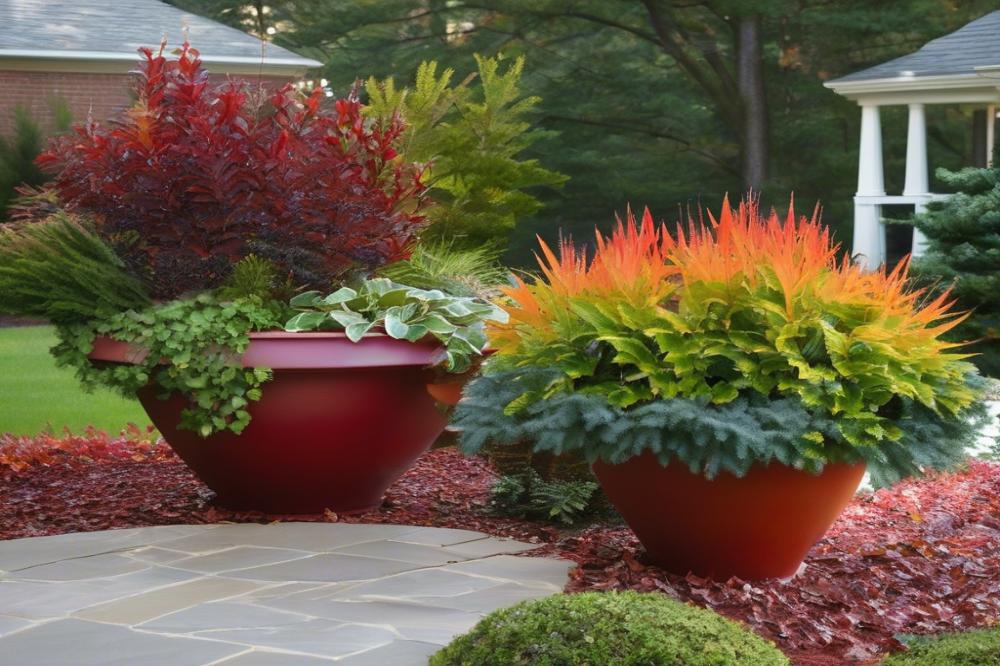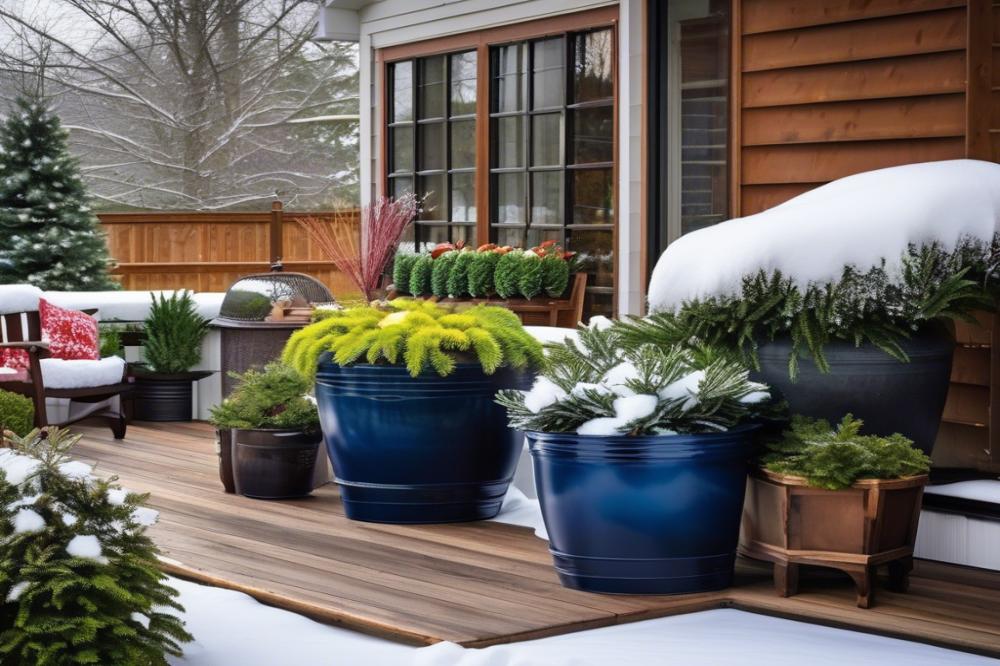Importance of Winterizing Your Container Garden
As temperatures drop and winter approaches, taking steps to winterize your container garden becomes crucial. Many gardeners overlook the unique challenges posed by colder months. Container plants can suffer significantly due to temperature fluctuations, frost, and other harsh conditions. It is essential to recognize how vulnerable these plants can be when left outside without proper precautions.
Plants in containers face a different set of circumstances compared to those planted in the ground. The soil in pots tends to freeze faster than in the earth, which can hinder growth and even kill roots. Additionally, the limited volume of soil provides less insulation against freezing temperatures. Gardeners must be proactive in planning for frost protection to prevent damage to their beloved plants.
Proper winter care can offer numerous benefits. Effective soil management and adequate drainage are vital for keeping container plants healthy. Mulching atop the soil can also provide extra insulation. By taking the time to prepare for the season, gardeners can preserve their plants and enhance their chances of thriving once spring returns.
This article will share valuable container gardening tips for effective overwintering plants. With the right strategies, you can protect your container garden and keep it vibrant for the next growing season.
Understanding Container Plants


Container gardens have grown in popularity for many reasons. First, they allow for flexibility. You can move your plants around to find the best sun exposure. They also work well in small spaces. This makes them perfect for apartments or tiny yards. With pots and planters, gardeners can create vibrant displays right next to their homes.
There are key differences between traditional gardening and container gardening. Traditional gardening usually takes place in the ground. This means plants rely on the native soil for nutrients. In contrast, container gardening relies on soil management. Gardeners fill pots with their preferred soil mix. This gives them more control over the nutrients and drainage. Also, the roots of container plants have limited space. This means they need more careful plant care, as the soil can dry out quickly.
Common Types of Plants Suited for Containers
Some plants thrive in containers better than others. For example, herbs are popular choices. Basil, mint, and cilantro grow well in pots. Vegetables such as tomatoes and peppers also do well. They offer fresh produce right from your balcony. Flowering plants like petunias and geraniums add color, making any space feel welcoming.
When selecting plants, consider the climate and seasonal changes. Certain varieties are better suited for winter gardening. Some options can be left outdoors while others require overwintering plants inside. frost protection becomes essential as temperatures drop. You may need to cover pots with burlap or move them to a sheltered area.
Proper drainage is crucial as well. Excess water can lead to root rot. Before winter arrives, be mindful of your container’s condition. Mulching plants is one method to help retain moisture and regulate temperature. Gardening best practices involve keeping a close eye on your plants through all seasons.
In summary, recognizing the unique features of container gardens is vital. By understanding the differences from traditional gardening, you’ll be better equipped. Knowing which plants to choose adds to the joy of growing. Winterize your container garden with thoughtful preparation, and you will enjoy your vibrant space for months to come.
Preparing for Winter: plant care


Before the cold weather arrives, take some time to assess the health of your container plants. Look for signs of disease or pest damage. Healthy plants have a better chance of surviving harsh conditions. Mark any plants that seem weak or unhealthy for further attention.
Next, consider pruning and removing dead foliage. Cutting back overgrown or dead branches can promote better airflow around the plants. Dead leaves often harbor pests or diseases, so it’s wise to remove them. This not only keeps your garden tidy, but it can also enhance plant health during winter gardening.
Identifying Plants that Need Special Care
Some plants may require specific frost protection. Tropical varieties, for example, will not survive freezing temperatures. Keep an eye on any plants that are not hardy in your region. They might need to be brought indoors or given extra insulating layers to help them overwinter.
Soil management is also vital as temperatures drop. Ensure that soil in containers has proper drainage. Overly saturated soil can lead to root rot during winter. Consider adding mulch to retain moisture and protect the roots from severe cold. This gardening best practice can create a buffer against temperature fluctuations.
Identify plants that are more sensitive to cold. Some species thrive with minimal care, while others need extra attention. Make a plan for each type of plant. Knowing which require special care will help you during this seasonal preparation.
Soil Management for Winter


Good soil health is crucial for any garden, especially in winter gardening. Healthy soil can retain moisture and nutrients, supporting container plants even in cold months. It acts as a foundation, feeding your plants with what they need to survive frosts and freeze-thaw cycles.
Consider amending your soil before the chill sets in. Adding organic matter, such as compost, enriches the soil and improves its structure. This not only boosts nutrient content but also encourages microbial life, which is essential for plant care.
Mulching can also protect your soil during winter. A layer of mulch helps insulate the soil, retaining warmth and moisture. It reduces the risk of erosion and keeps nutrients in place when heavy rains occur.
Preventing soil compaction is another key element of successful soil management. Compacted soil can inhibit root growth and drainage. Check your containers; if they feel dense, consider loosening the soil gently with a hand fork. This will enhance air circulation and promote healthier roots.
Maintaining proper drainage is vital, too. Overly saturated soil can lead to root rot, especially in containers. Ensuring that your pots have adequate drainage holes will allow excess water to escape. You might also consider adding gravel or perlite to the mix to facilitate better drainage, assisting with overwintering plants.
Frost Protection Techniques


When winter approaches, understanding frost risks is crucial for any gardener. Frost can harm tender container plants. Knowing when your area typically experiences the first frost is essential. Research local weather patterns to anticipate these cold nights.
Covering container gardens with frost cloths or blankets serves as a smart defense. These materials trap heat and create a protective barrier over plants. Use lightweight cloths that allow sunlight to penetrate when the sun rises. Strategic placement will make a difference. Secure the coverings to prevent them from blowing away during windy nights.
Consider moving containers to sheltered locations when the weather forecasts a frost. Find spots near walls or larger plants that provide some windbreak. This method can effectively reduce frost exposure. Just remember that some plants might need more light, so keep their sunlight needs in mind.
Soil management also plays a vital role in winter gardening. Ensure the soil has good drainage to prevent water from freezing, which can damage roots. Enhancing your containers with a layer of mulch helps insulate the soil. Mulch prevents it from freezing solid and protects the plants’ roots.
Many gardeners also think about how to properly overwinter plants. Seasonal preparation is necessary for a successful transition into the colder months. With these frost protection techniques, you’ll promote better plant care throughout winter.
Mulching for Insulation
Mulching container plants in winter provides several benefits that help them survive harsh conditions. A good layer of mulch acts as insulation. It protects against sudden temperature changes and keeps the soil temperature stable. This is crucial when frost threatens your plants. The layer also retains moisture, which is vital during colder months when rain is less frequent. Moreover, it reduces soil erosion and prevents weed growth, which can compete for nutrients.
Recommended Mulch Materials
When selecting mulch, various materials work well for overwintering plants. Organic options such as straw, shredded leaves, or wood chips will enrich the soil as they break down over time. These materials are lightweight, making them suitable for container gardening. Peat moss is another favorite; it holds moisture effectively and provides good insulation. For a more decorative look, bark nuggets can be used. Just remember that choosing the right mulch can make a difference in plant health and soil management.
How to Properly Apply Mulch Around Plants
Applying mulch around container plants requires a bit of care. Start by cleaning the area around the plants. Remove any dead leaves or debris to reduce the risk of pests and diseases. Spread a layer of mulch about two to three inches thick, ensuring it surrounds the base of each plant. However, avoid piling mulch directly against the plant stems, as this can cause rot. Monitoring drainage is critical, too; ensure that your containers do not retain excess water. Finally, check your mulch layer throughout the winter. If it settles or washes away, replenish it as needed. This consistent attention is part of good plant care during the cold months.
Overwintering Techniques
Different methods exist for overwintering plants in your container garden. Each technique helps to protect them from harsh winter conditions. One common method is relocating these pots to a sheltered area. This might mean finding a spot next to a building or under a porch. Protecting container plants from frost is crucial to their survival.
Bringing tender plants indoors is another essential step. Start by inspecting each plant carefully for pests. Remove any dead leaves or flowers to promote healthy growth. Place the ones you select in a bright location, preferably near a window that receives sunlight. Keeping the indoor environment humid can help mimic their original conditions. However, overwatering can lead to root rot, so manage soil drainage wisely.
Creating a winter gardening space indoors allows for continued enjoyment of your plants. Use well-draining pots to avoid excess moisture. Consider grouping plants together; this can create a microclimate that retains humidity. Mulching them at the base can add extra insulation. Moreover, follow some gardening best practices by checking them regularly for signs of stress.
Seasonal preparation is critical during this time. Monitor indoor temperatures to keep plants comfortable. If the air in your home is too dry, use a humidifier. Alternatively, regularly mist your plants to enhance moisture. Adjust care routines based on how plants respond. Your attention to plant care will help ensure they thrive come spring.
Lastly, remember that managing soil conditions even during the winter is vital. Adjust the watering schedule based on the indoor climate. Healthy plants require the right balance of moisture and air in the soil. Overwintering plants successfully can enhance your garden’s resilience for future seasons.
Seasonal Preparation and Best Practices
Planning for spring while winterizing your container garden is essential for success. Think ahead to the next growing season. Consider what plants you want to include. This is a good time for soil management as well. Refresh your potting mix to keep container plants healthy.
Frost protection is crucial during the cold months. Insulate pots by wrapping them in burlap or bubble wrap. This simple step helps maintain warmth around the roots. Plant care should also involve moving containers to sheltered spots. Corners of your yard or patio can provide some needed protection against harsh winds.
Encouraging beneficial insects and wildlife during winter can be a game-changer. Create a habitat using natural materials. Fallen leaves, twigs, and other organic matter can attract helpful critters. These animals will aid in controlling pests come spring. Plus, having a balanced ecosystem benefits your garden in countless ways.
Regular check-ups and maintenance throughout winter keep your plants thriving. Inspect pots often for drainage issues. Overwatering can be just as harmful as underwatering. Ensure containers have proper drainage holes open and clear, preventing water from pooling.
Don’t forget about mulching. Adding a layer of mulch helps to retain soil moisture and temperature. Use organic materials that break down over time. This practice enriches the soil while also providing frost protection for roots. As nature unfolds, your container plants will appreciate the care you’ve taken.
In winter gardening, it’s vital to provide overwintering plants with the attention they need. Roots are still active, even when the above-ground growth slows down. Regularly check plants for any signs of distress. Addressing issues promptly can prevent major problems when spring arrives.
Winter is a time for reflection and preparation. Gardening best practices evolve, so stay informed about new methods. Share experiences with fellow gardeners and learn from them. Together, the knowledge can transform your approach to the growing season.
Wrapping Up Your Winter Gardening Journey
Taking the steps to prepare your container garden for winter is more than just a chore; it’s essential for keeping your plants healthy and vibrant. As temperatures drop and frost begins to settle in, failing to protect your garden can lead to damage or loss of your beloved plants. Therefore, winterization acts as a shield against the harsh elements, granting them a fighting chance until warmer days arrive.
Embracing best practices during this preparation phase can make a world of difference. Be it adding insulation to pots, relocating them to sheltered areas, or providing frost protection, each small effort counts. When you prioritize plant care, you nurture a sustainable environment that thrives even in winter.
Remember, gardening isn’t confined to the spring and summer months. With some thoughtful planning and preparation, you can enjoy the joy of gardening all year round. Think of your winter container garden as a way to stay connected to nature, even when snow blankets the ground. So, gather your tools, review your strategies, and get ready to embrace the beauty of a winterized garden!



